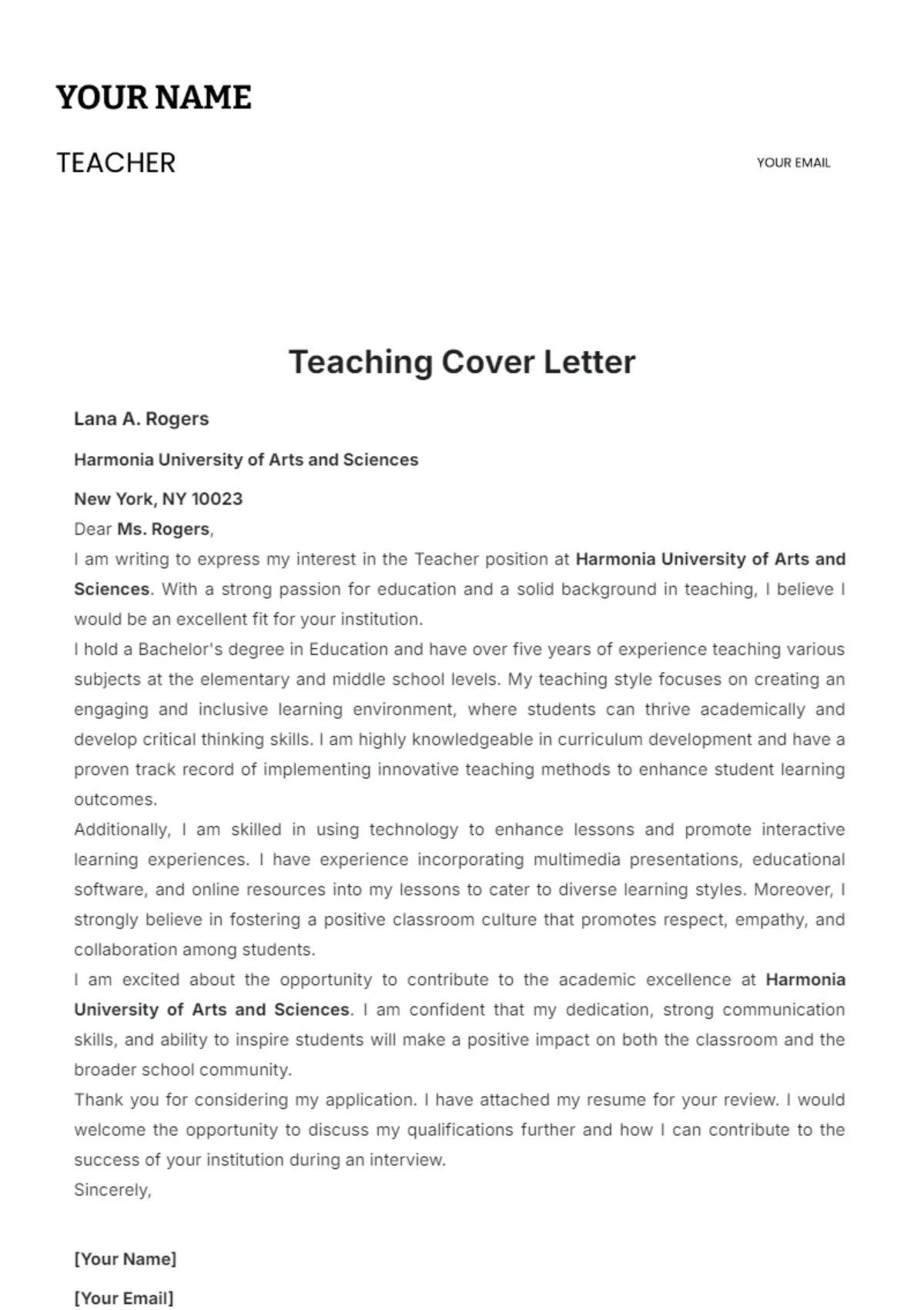Why a Teaching Cover Letter Template is Essential
In the competitive field of education, a well-crafted teaching cover letter is your first opportunity to make a strong impression. It’s more than just a formality; it’s a critical tool that allows you to go beyond your resume and showcase your personality, passion for teaching, and unique qualifications. A teaching cover letter template provides a solid foundation, ensuring you address all the necessary aspects while saving you time and effort. With a template, you can focus on customizing the content to fit the specific job and school, increasing your chances of getting an interview. It highlights your key skills, experiences, and educational philosophy, giving the hiring manager a clear understanding of why you are the ideal candidate for the position.
Understanding the Purpose of a Teaching Cover Letter
The primary purpose of a teaching cover letter is to introduce yourself and your qualifications to a potential employer. It serves as a personal introduction, demonstrating your enthusiasm for the role and the school. Unlike a resume, a cover letter lets you explain your teaching philosophy, classroom management style, and how you can contribute to the school’s culture. It should provide context to your resume, connecting your past experiences to the specific job requirements. Cover letters also provide an opportunity to address any gaps in your resume or explain career transitions. Ultimately, it’s about showing the hiring manager that you are not only qualified but also the right fit for their school.
Highlighting Your Teaching Experience
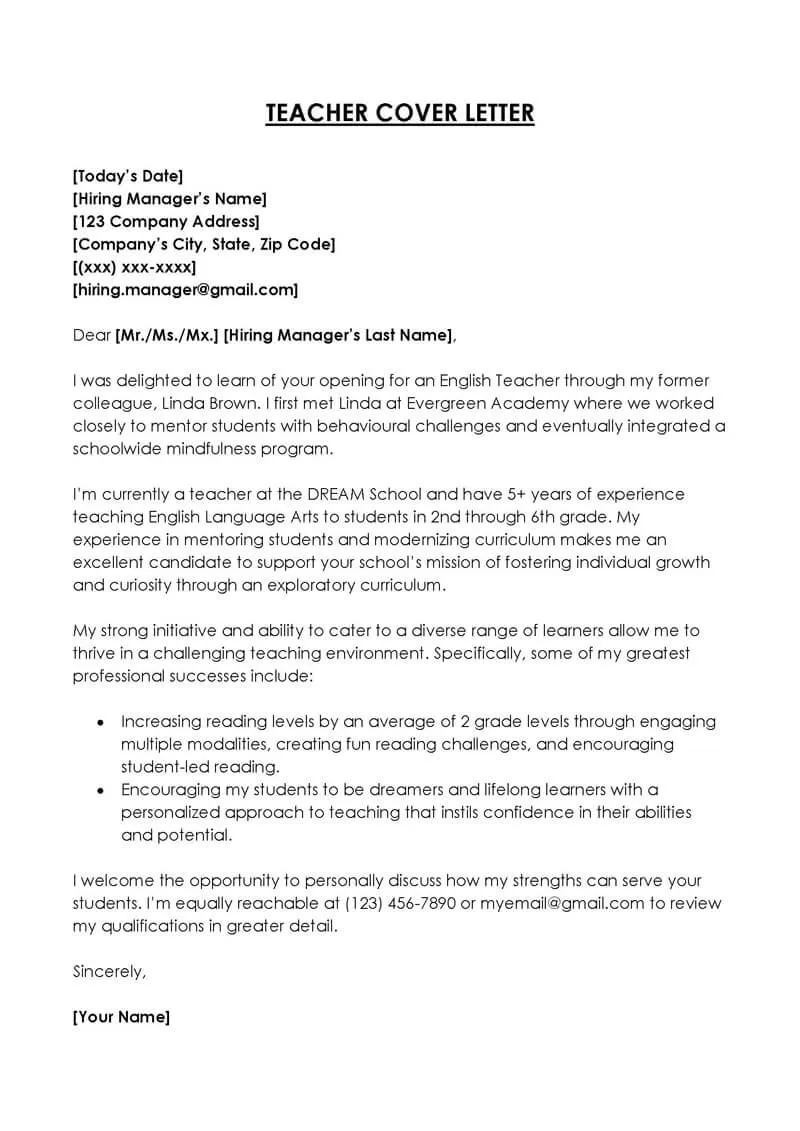
Your cover letter is a crucial place to highlight your teaching experience. Instead of simply listing your previous roles, elaborate on your achievements. Quantify your accomplishments whenever possible using data, such as the percentage of students who improved their test scores, successful implementation of new curricula, or positive feedback received from parents and students. Mention the grade levels and subjects you’ve taught, along with any special programs or initiatives you were involved in. Detail specific teaching methodologies you’ve employed, like differentiated instruction, project-based learning, or the use of technology in the classroom. Clearly demonstrating how your experience aligns with the job requirements is essential for capturing the hiring manager’s attention.
Skills to Showcase in Your Cover Letter
Your teaching cover letter is the perfect place to showcase your skills. Include both hard skills and soft skills. Hard skills might include curriculum development, classroom management techniques, proficiency in educational software, and assessment methods. Soft skills are equally important, such as communication, collaboration, problem-solving, and adaptability. Tailor your list of skills to align with the job description, emphasizing the skills that are most relevant to the position. Provide specific examples of how you’ve used these skills in your previous roles, highlighting positive outcomes and demonstrating your ability to excel in the classroom. For example, showcase your ability to create a positive and inclusive classroom environment, manage student behavior effectively, and foster a love of learning.
Educational Qualifications and Certifications
Clearly state your educational qualifications and certifications in your teaching cover letter. List your degrees, including the name of the institution, the major, and the year of graduation. If you have multiple degrees, prioritize the one that is most relevant to the teaching position. Highlight any relevant certifications, such as a teaching license or endorsements in specific subjects or age groups. Be sure to mention any professional development courses, workshops, or trainings you’ve completed that are pertinent to the job. If you are pursuing additional qualifications, mention them, showing your commitment to ongoing learning and professional growth. Make it easy for the hiring manager to verify your credentials.
Key Elements of a Compelling Teaching Cover Letter Template
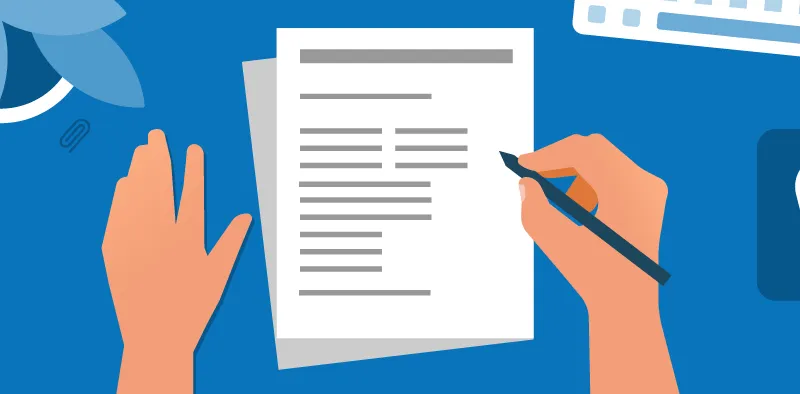
A compelling teaching cover letter template should include several key elements. Start with a professional heading with your contact information and the date. Properly address the hiring manager by name, if possible. Your opening paragraph should immediately capture the reader’s attention, stating the position you’re applying for and expressing your enthusiasm. The body of the letter should showcase your experience, skills, and passion for teaching, providing specific examples. Close with a strong conclusion that reiterates your interest and includes a call to action. The template should also be easy to read, with clear paragraphs and formatting, to make it visually appealing. This will help you to stand out.
Formatting Your Teaching Cover Letter
Proper formatting is essential for a teaching cover letter. Use a professional font, such as Times New Roman, Arial, or Calibri, and keep the font size between 10 and 12 points. Maintain consistent spacing, typically single-spaced within paragraphs and double-spaced between paragraphs. Use left alignment, and avoid full justification as it can create uneven spacing. Keep the margins at one inch on all sides. Divide your letter into clear sections with headings to improve readability. Proofread carefully for any grammatical errors or typos, as these can undermine your professionalism. A well-formatted cover letter demonstrates your attention to detail and commitment to quality.
Choosing the Right Template
Selecting the right template is the first step in creating an effective cover letter. There are various templates available online, from simple and clean designs to more elaborate ones. Choose a template that aligns with your personal brand and the culture of the school you’re applying to. Ensure the template is easy to customize with your own information and that it allows for clear and concise presentation of your qualifications. Consider the format; while some candidates prefer a traditional style, others may opt for a more modern design. Always make sure the template is compatible with your word processor. Prioritize readability and a professional appearance. Look for templates that offer customizable sections.
Customizing Your Cover Letter for Each Application
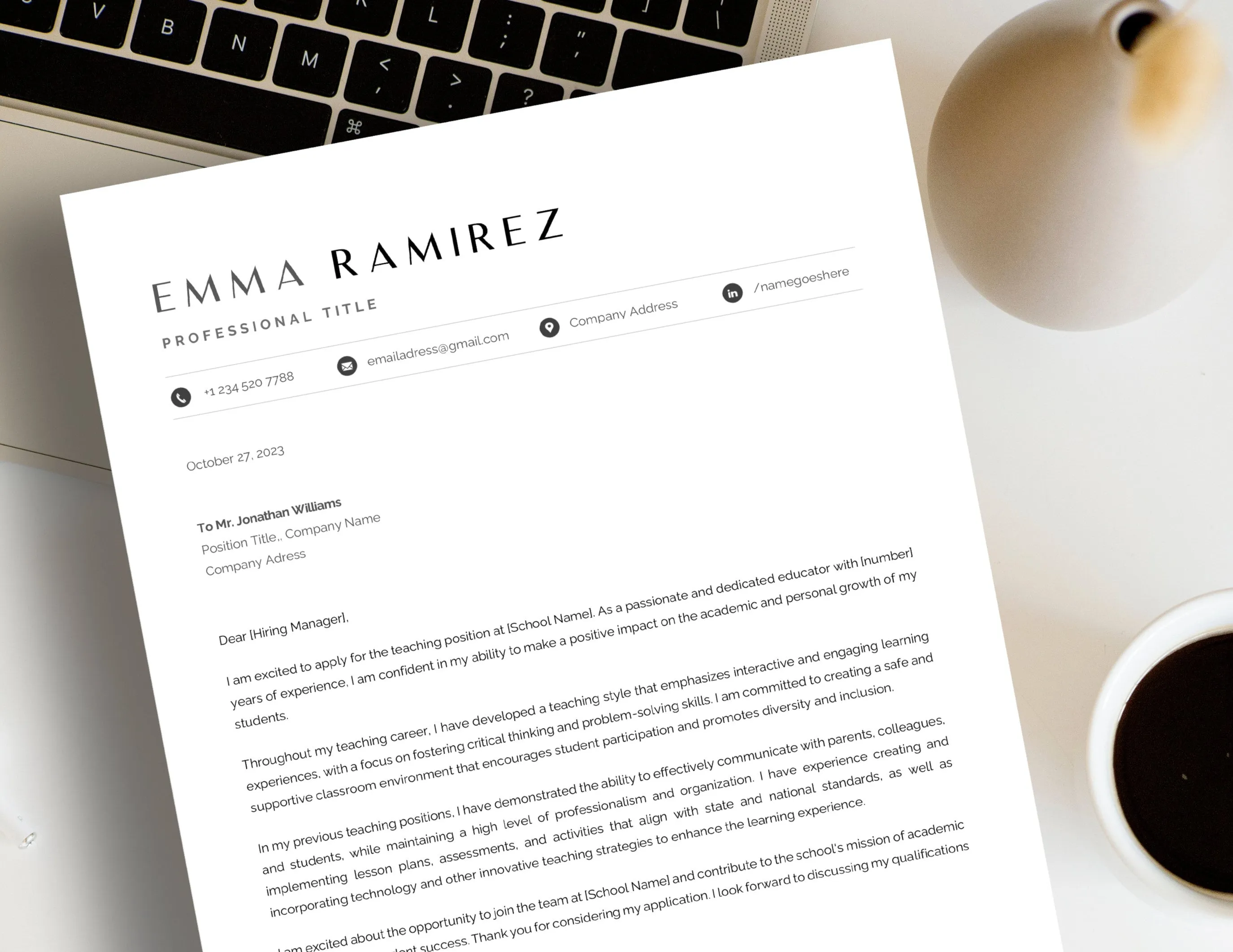
The most effective cover letters are customized for each job application. Do not use a generic template for every application. Carefully review the job description and tailor your letter to highlight the specific skills, experiences, and qualifications the school is seeking. Use keywords from the job description to demonstrate your understanding of the role and the school’s needs. Research the school’s mission, values, and programs, and reflect those elements in your cover letter to show that you are a good fit for their environment. Personalize your letter by addressing the hiring manager by name, if possible, and referencing specific details about the school or the position. This level of personalization shows you have taken the time to understand their needs.
Essential Sections to Include
Every teaching cover letter should include these essential sections: a professional heading with your contact information; a salutation addressing the hiring manager; an engaging opening paragraph stating the position and expressing your interest; a body section detailing your relevant experiences, skills, and achievements; a closing paragraph summarizing your qualifications and reiterating your enthusiasm; and a professional closing with your signature. Each section should be clear, concise, and tailored to the specific job requirements. Ensure your letter flows logically, connecting your experiences to the school’s needs. Include a call to action, such as an invitation to review your resume or a statement about your availability for an interview. Remember to proofread for errors.
Writing a Strong Opening
The opening paragraph is crucial for making a positive first impression. Start with a compelling hook to grab the hiring manager’s attention. Clearly state the position you are applying for and where you saw the advertisement. Express your enthusiasm for the role and the school. Briefly highlight your most relevant qualifications, such as years of experience, specific certifications, or a unique skill. For example, you might start by stating, “I am writing to express my enthusiastic interest in the elementary teaching position at [School Name], as advertised on [Platform].” In the opening, convey your genuine passion for teaching and make it clear why you want to work at that particular school. Keep it concise and engaging.
Detailing Your Teaching Experience
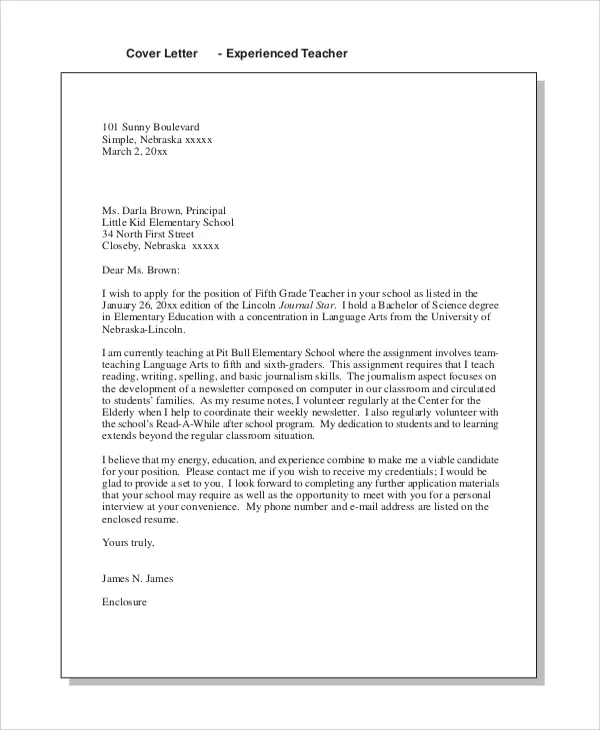
In the body of your cover letter, detail your teaching experience. Mention the schools and grade levels where you’ve taught, along with the subjects you covered. Use the STAR method (Situation, Task, Action, Result) to provide specific examples of your achievements. Describe the situations you encountered, the tasks you were assigned, the actions you took, and the positive results you achieved. Quantify your accomplishments whenever possible, such as the percentage of student improvement or the success of a new curriculum. Mention any special programs or initiatives you were involved in, and highlight your ability to create a positive and engaging classroom environment. Demonstrate your adaptability and commitment to student success.
Showcasing Your Skills and Achievements
Use this section to showcase your skills and accomplishments. Focus on skills that match the job requirements. Highlight your expertise in areas such as curriculum development, classroom management, differentiated instruction, and assessment strategies. Provide specific examples of how you’ve used these skills to improve student outcomes. Quantify your accomplishments with data, such as test scores, improved student engagement, or successful implementation of new initiatives. Describe any awards or recognition you’ve received. Showcase your ability to create a positive and inclusive learning environment. Emphasize how your skills and achievements align with the school’s values and goals. Demonstrate your dedication to student success and your capacity to create a dynamic classroom.
Expressing Your Passion for Education
Throughout your cover letter, express your passion for education. Share why you love teaching and what motivates you. Describe your teaching philosophy, highlighting your belief in student-centered learning, fostering critical thinking, or creating a supportive classroom environment. Convey your enthusiasm for helping students achieve their full potential. Mention any volunteer work or extracurricular activities you’ve been involved in that demonstrate your commitment to education. Show your genuine desire to make a positive impact on students’ lives. Expressing your passion will make you a more memorable candidate and show the hiring manager that you are dedicated.
Writing a Powerful Closing
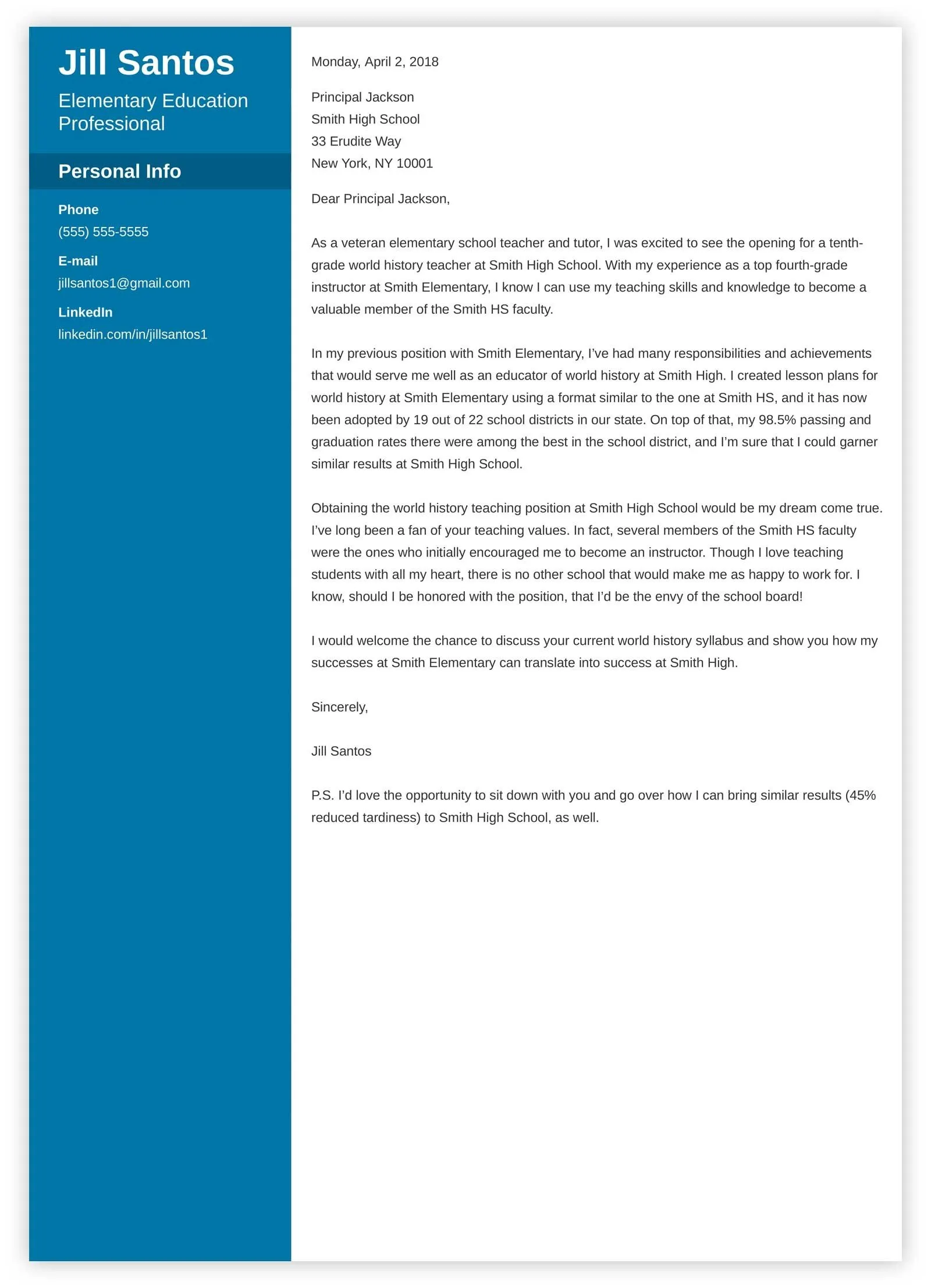
The closing paragraph is your final opportunity to leave a lasting impression. Summarize your qualifications and reiterate your enthusiasm for the position. Reiterate your interest in the school and why you believe you would be a good fit. Include a clear call to action, such as inviting the hiring manager to review your resume or stating your availability for an interview. Thank the hiring manager for their time and consideration. End with a professional closing, such as “Sincerely” or “Best regards”, followed by your typed name. Ensure your contact information is included, and proofread it carefully.
Proofreading and Editing Your Cover Letter
Before submitting your cover letter, proofread and edit it carefully. Check for any grammatical errors, spelling mistakes, and typos. Ensure your sentences flow logically and that your ideas are presented clearly and concisely. Read your cover letter aloud to catch any awkward phrasing or sentences. Have a friend or colleague review it for a fresh perspective. Check that the formatting is consistent and professional. Pay close attention to detail, as errors can reflect negatively on your professionalism. A polished cover letter shows you value quality and are committed to excellence.
Common Mistakes to Avoid
Avoid these common mistakes to ensure your cover letter makes a positive impression. Do not use a generic cover letter for every job application. Do not exceed one page. Avoid using overly formal or informal language. Refrain from including irrelevant information or personal details. Do not focus on what you want from the job; instead, highlight what you can offer. Avoid repeating information from your resume verbatim. Do not use clichés or generic phrases. Steer clear of negative language or criticisms of previous employers. Ensure your cover letter is free of errors and tailored to the specific job and school.
Using Action Verbs Effectively
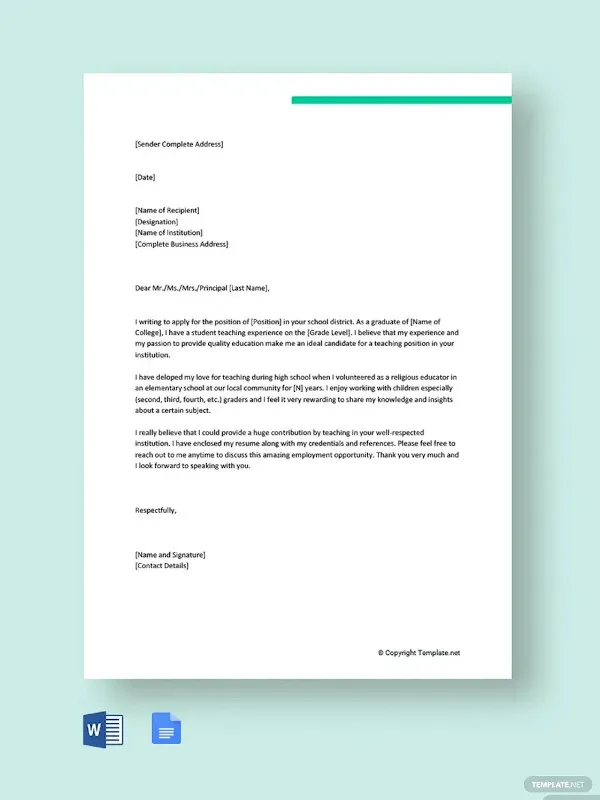
Using strong action verbs is critical for creating a compelling cover letter. Action verbs make your accomplishments and skills more dynamic and engaging. Start each bullet point or sentence with an action verb. Examples include: developed, implemented, created, managed, led, facilitated, assessed, improved, and motivated. Choose verbs that accurately describe your actions and achievements. Avoid using passive voice. Use action verbs to clearly convey your impact on student learning. For instance, instead of writing, “Responsibilities included planning lessons,” write “Developed and implemented engaging lesson plans.” This will provide a vivid picture of your capabilities.
Tailoring Your Letter to the Job Description
Tailoring your cover letter to the job description is key to getting an interview. Carefully analyze the job posting and identify the key requirements and qualifications the school is seeking. Use keywords from the job description throughout your cover letter to show you meet their needs. Provide specific examples of how your skills and experiences match the requirements. Show that you understand the role and the school’s priorities. Tailor your language and tone to match the school’s culture. Demonstrate your knowledge of the school, its mission, and values. Customizing your cover letter will help you stand out from other applicants.
The Importance of a Professional Tone
Maintaining a professional tone throughout your teaching cover letter is essential. Use formal language and avoid slang or colloquialisms. Address the hiring manager by name if possible, and use a professional greeting, such as “Dear Mr./Ms./Dr. [Last Name].” Maintain a positive and enthusiastic tone. Be respectful and courteous in your communication. Proofread carefully to ensure your writing is free from errors. Avoid being overly casual or familiar. Your cover letter represents you and your professionalism, so it’s critical to make a positive and lasting impression.
Top Tips for Writing an Effective Teaching Cover Letter

Here are some top tips for writing an effective teaching cover letter. Customize your letter for each job application. Highlight your relevant skills and experience. Use action verbs to describe your accomplishments. Quantify your achievements with data. Express your passion for education. Proofread and edit carefully for errors. Research the school and demonstrate your knowledge. Address the hiring manager by name. Keep it concise and easy to read. Demonstrate your ability to create a positive and engaging classroom environment. Use these tips to create a cover letter that gets you noticed.
Show, Don’t Just Tell
One of the most important principles in writing a cover letter is to show, not just tell. Instead of simply stating that you’re a good teacher, provide specific examples that demonstrate your skills and achievements. Use the STAR method (Situation, Task, Action, Result) to provide context. For instance, instead of saying “I am a good classroom manager,” write “In a class of 25 students, I implemented a new behavior management system, which reduced disruptive behavior by 30% within the first month.” Showcasing your impact will make a stronger impression than merely stating your qualities.
Quantify Your Accomplishments
Whenever possible, quantify your accomplishments in your teaching cover letter. Numbers add credibility and demonstrate the impact of your work. Include data such as test scores, student improvement rates, or the success of new programs you’ve implemented. For example, state that you increased student scores on a standardized test by a certain percentage, or reduced the number of disciplinary incidents by a specific amount. Quantifying your accomplishments provides concrete evidence of your skills and achievements. Data makes your letter more persuasive and helps you stand out from other applicants.
Demonstrate Your Knowledge of the School
Demonstrating your knowledge of the school shows that you are genuinely interested in the position and have taken the time to research the organization. Before writing your cover letter, visit the school’s website, read its mission statement, and learn about its values and programs. Mention specific details about the school in your cover letter, showing that you understand its culture and educational philosophy. If the school has any unique programs or initiatives, mention them and explain how your skills and experience align with those programs. Tailoring your cover letter to reflect the school’s specific needs and values will significantly enhance your chances of securing an interview.
Highlighting Your Understanding of Child Development
Highlighting your understanding of child development is important for teaching cover letters, especially for elementary and early childhood positions. Show that you understand the different stages of child development and how to create age-appropriate learning experiences. Discuss your ability to differentiate instruction to meet the diverse needs of students. Mention your skills in creating a supportive and inclusive classroom environment where students feel safe to learn. Provide examples of how you have used your knowledge of child development to improve student outcomes. This will highlight your commitment to students.
Building Rapport With the Hiring Manager
Building rapport with the hiring manager is important for making a positive impression. Address the hiring manager by name, if possible, and personalize your letter to show your genuine interest in the position. Refer to specific aspects of the school or the job description. Express your enthusiasm for the school’s mission and values. Write in a friendly, professional tone, and convey your personality. By building rapport, you make it easier for the hiring manager to connect with you. This increases your likelihood of being invited for an interview.
Real-World Examples and Template
Provide real-world examples in your cover letter to bring your skills and experience to life. Share specific anecdotes, stories, and achievements that showcase your abilities. Use these examples to illustrate how you’ve overcome challenges, implemented successful teaching strategies, and positively impacted student learning. Templates help provide a structure for your letter. Use the following templates as inspiration, remember to customize them for your situation. These examples should be adapted to reflect your own experiences and the requirements of the job.
Template Example for Elementary Teachers
Dear [Hiring Manager Name],
I am writing to express my enthusiastic interest in the elementary teaching position at [School Name], as advertised on [Platform]. With [Number] years of experience in elementary education, I am passionate about creating engaging and supportive learning environments where every student can thrive.
In my previous role at [Previous School], I was responsible for [List of Responsibilities]. I implemented a differentiated instruction strategy that increased student reading comprehension scores by 20%. I also developed and implemented a new classroom management system that reduced behavioral issues by 35%.
I am particularly drawn to [School Name]’s commitment to [School’s Mission/Values]. My teaching philosophy aligns perfectly with your focus on [Specific Program/Initiative]. I am confident that my skills and experience make me an ideal candidate.
Thank you for your time and consideration. I have attached my resume for your review and welcome the opportunity to discuss my qualifications further.
Sincerely, [Your Name]
Template Example for Secondary Teachers
Dear [Hiring Manager Name],
I am writing to express my interest in the [Subject] teaching position at [School Name]. I am passionate about fostering a love of learning and helping students succeed. With [Number] years of experience teaching [Subject] at the secondary level, I am confident that my skills and experience align with your needs.
At [Previous School], I developed and implemented a new curriculum that increased student performance by 15%. I also incorporated technology to create engaging lessons, resulting in higher student participation. I also have experience with [Specific Techniques]
I am impressed by [School Name]’s dedication to [School’s Values]. I am excited about the possibility of contributing to your academic programs.
Thank you for your consideration. I have attached my resume and would appreciate the opportunity to discuss my qualifications.
Sincerely, [Your Name]
Template Example for Special Education Teachers
Dear [Hiring Manager Name],
I am writing to express my enthusiasm for the Special Education teaching position at [School Name]. I have [Number] years of experience working with students with diverse learning needs. I am dedicated to creating inclusive and supportive learning environments where every student can reach their full potential.
In my previous role at [Previous School], I developed individualized education programs (IEPs) that met the specific needs of students. I implemented strategies that improved student outcomes. I have experience with [Specific Disabilities] and am skilled at adapting my teaching methods to meet the needs of students with various disabilities.
I am drawn to [School Name]’s commitment to [School’s Values]. I am eager to join your team and contribute to creating a nurturing environment for special education students.
Thank you for considering my application. I have attached my resume and am available for an interview at your earliest convenience.
Sincerely, [Your Name]
Template Example for Early Childhood Educators
Dear [Hiring Manager Name],
I am writing to express my keen interest in the Early Childhood Educator position at [School Name]. With [Number] years of experience working with young children, I am passionate about fostering a love of learning and providing a nurturing environment for children to grow. I specialize in [Specific areas of expertise, like language development or play-based learning].
At [Previous School/Center], I designed and implemented age-appropriate curriculum, which improved social, emotional, and cognitive development. I created engaging activities and lessons that encouraged curiosity. I have experience using [Specific Teaching Methodologies or Curriculum].
I am inspired by [School Name]’s dedication to [Specific Approach, such as Montessori, play-based learning]. I am eager to contribute to your team.
Thank you for your consideration. I have attached my resume, and I am available for an interview.
Sincerely, [Your Name]
Finalizing and Submitting Your Cover Letter
Before submitting your cover letter, take these final steps. Save your cover letter with a professional file name, such as “YourName_CoverLetter”. Convert your cover letter to a PDF format to ensure that the formatting remains consistent across different devices. Proofread the document for any grammatical errors, spelling mistakes, or typos. Double-check that all your contact information is correct and that the recipient’s address is accurate. Follow the instructions provided in the job posting about how to submit your application. If you are sending your cover letter electronically, personalize the email subject line and the body of the email. Make sure all your attachments are attached correctly before sending your cover letter.
Saving Your Cover Letter in the Right Format
Saving your cover letter in the correct format is essential for maintaining its appearance and ensuring it is easily accessible. The recommended format for most applications is PDF (Portable Document Format). PDF files preserve the formatting, ensuring your cover letter looks the same regardless of the device or operating system used to open it. Before saving, review your cover letter to ensure all formatting elements, such as fonts, margins, and spacing, are correctly displayed. Use a clear and professional file name, like “YourName_CoverLetter.pdf”. When submitting your cover letter online, follow the instructions provided in the job application process. If possible, save the document using the requested file name. Saving in the right format is a simple step that will showcase your professionalism.
Sending Your Cover Letter and Resume
When sending your cover letter and resume, pay attention to the details. If submitting electronically, ensure the email subject line clearly states the position you are applying for, such as “Application for Elementary Teacher Position.” In the body of the email, include a brief, polite message thanking the hiring manager for their time and restating your interest in the position. Clearly state that you are attaching your cover letter and resume. Attach both documents in PDF format. If the job posting has specific instructions for submitting your application, be sure to follow them precisely. After sending your application, consider following up with a brief email or phone call to confirm that your application has been received and to reiterate your interest in the position. A well-executed submission process reflects your attention to detail and your commitment to the job.
